From Darkness to Light
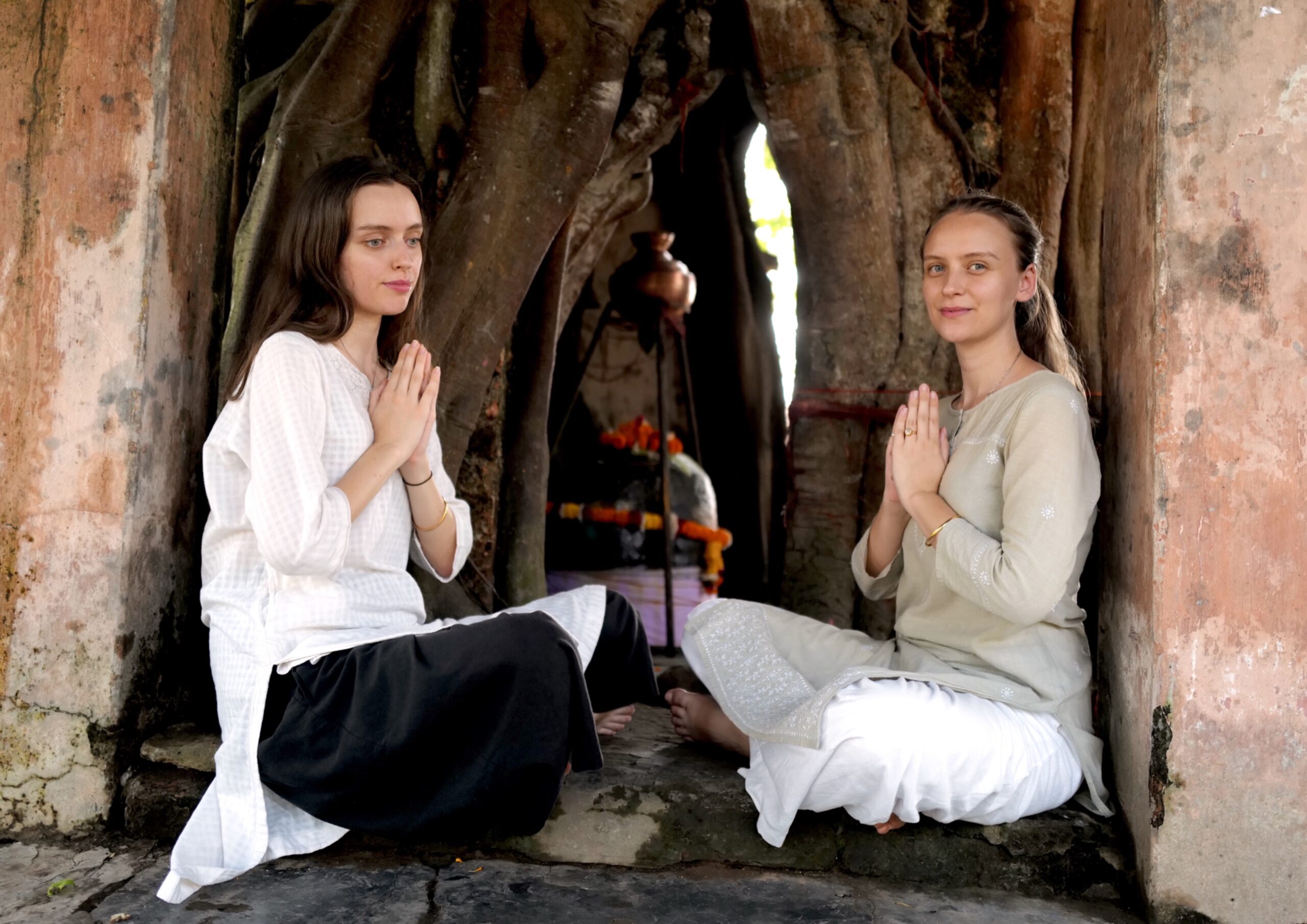
Inspired by ancient philosophies and spiritual practices, sister-duo Jahnavi and Kamala through their community Samādhi Collective are creating a space to deepen the understanding of the self
An unlikely sibling duo immersed in the world of mantra and meditation, Jahnavi and Kamala were born in England and were brought up across India, the Netherlands, and the USA. Their parents, avid travellers, explored the world and took the sisters along for the journey. Their parents were drawn to Indian philosophical ideas and culture and spirituality; thus, a large part of the sisters’ childhood and teenage years were spent in Rishikesh, staying over a decade in India.
“Growing up in Rishikesh has definitely played a large role in who we are today, as we were surrounded by spiritual life in many forms. Our family frequently held pujas and yajnas at our home with large groups of pandits, so the recitation of mantras was part of our everyday reality,” they say.
Living next to the Ganges meant that taking daily snaan, making offerings to the river, and attending aarti, central to their reality. “Being surrounded by those following a spiritual path meant that our practices or sadhana naturally grew and we became rooted in the study and experience of the ancient culture and traditions without really thinking about it. To us, it was just daily life in India,” they explain. In 2008, their father retired from business, making India their home.
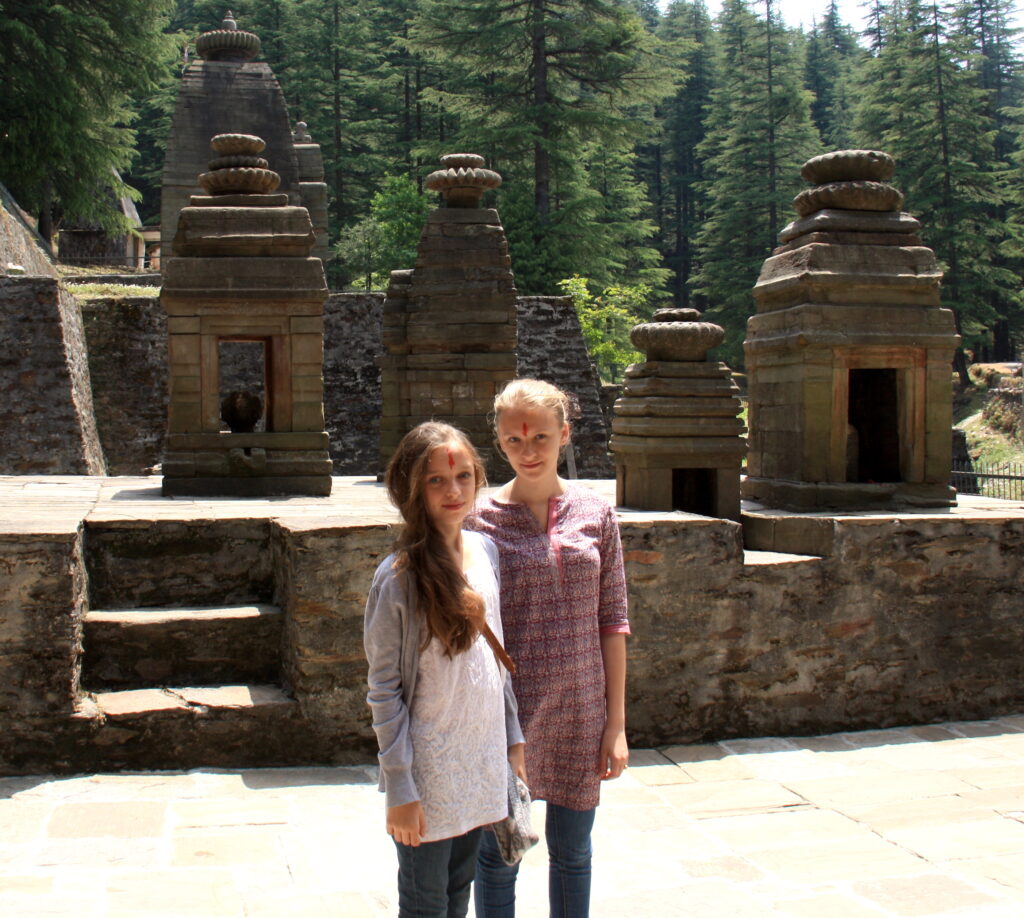
Kamala holds an MPhil in Sanskrit and Indian philosophy from Oxford University and is an art history graduate from the University of London. She has also studied Sanskrit and holds a diploma in Hindustani Classical Music. A trained yoga instructor, Jahnavi is an artist, designer and portrait painter, who studied the tradition of Indian miniature painting in Rajasthan and also holds a diploma in Hindustani Classical Music.
BeejLiving speaks to Jahnavi and Kamala how Samādhi Collective came into being and on seeking out hope and inspiration in an increasingly polarized world.
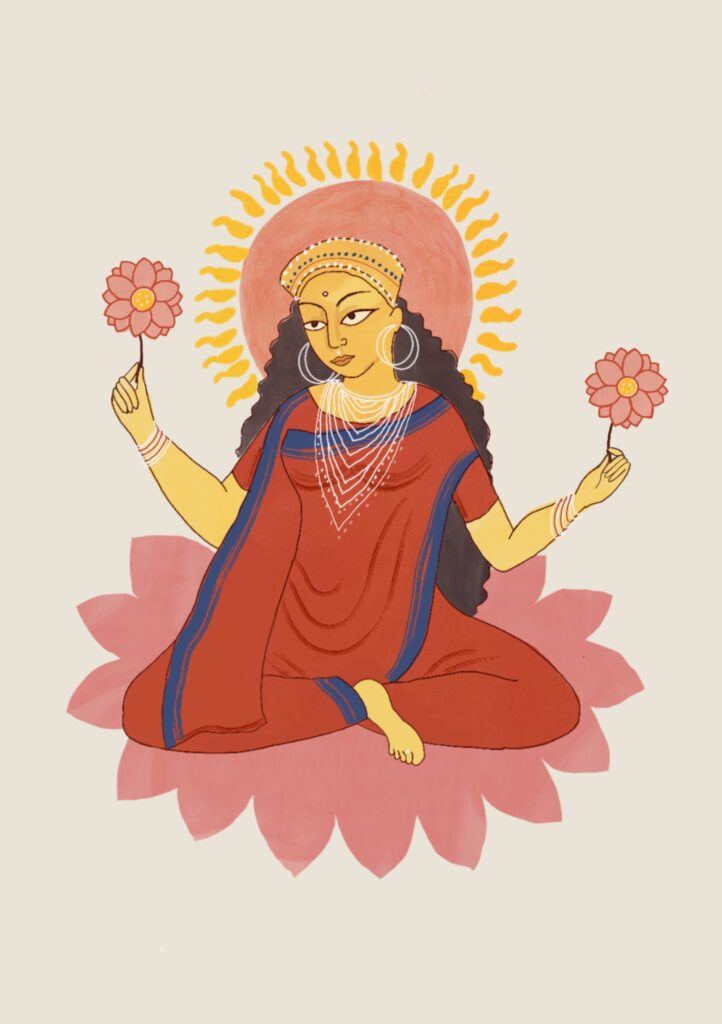
Kamala, could you share your journey and passion for Sanskrit, Indian philosophical systems, and Hindustani classical music studies? What inspired your pursuit, and which aspects of these subjects captivated you the most?
Kamala: I began studying Sanskrit together with Jahnavi when we were children, mostly the alphabet, and learning various mantras. The journey into studying Sanskrit academically came about after I completed my BA in History of Art. I had been studying ragamala painting (compositions based on the modes of Indian Classical Music), which sparked my interest, as Jahnavi and I had been students of Hindustani Classical vocals in India. The amalgamation of music and art was fascinating to explore. On each painting, there were Sanskrit inscriptions, and although I could read the text in Devanagari, I also naturally wanted to know the meaning, and this inspired me to studying for an MPhil in Sanskrit and Indian Philosophy. During my studies in Sanskrit at Oxford I also used to come to Karnataka and study Sanskrit traditionally during my vacations.
Jahnavi, tell us what attracted you to yoga and art and how does it entwine with the aesthetic of the Samādhi Collective?
Jahnavi: Though I had been practicing yoga since I was just a small child, after being introduced to it through my parents. I found myself wishing to dive deeper into it myself, as I saw it as the ultimate self-sufficiency.
“Yoga gives you all the tools you need to find the solutions within yourself, no matter what life presents you with. It simultaneously makes your body and mind stronger, giving you a foundation that you can always come back to, anchoring you and keeping you grounded.”
As for art, I’ve always drawn and painted throughout my life, but creating Samādhi brought together both my love for creative expression through visuals, and my love for Indian philosophy. Being able to bridge the two has been the most enjoyable and meditative process. The aesthetic we have cultivated on our page really stems from the beauty that is seen in the daily rituals and practices of India.
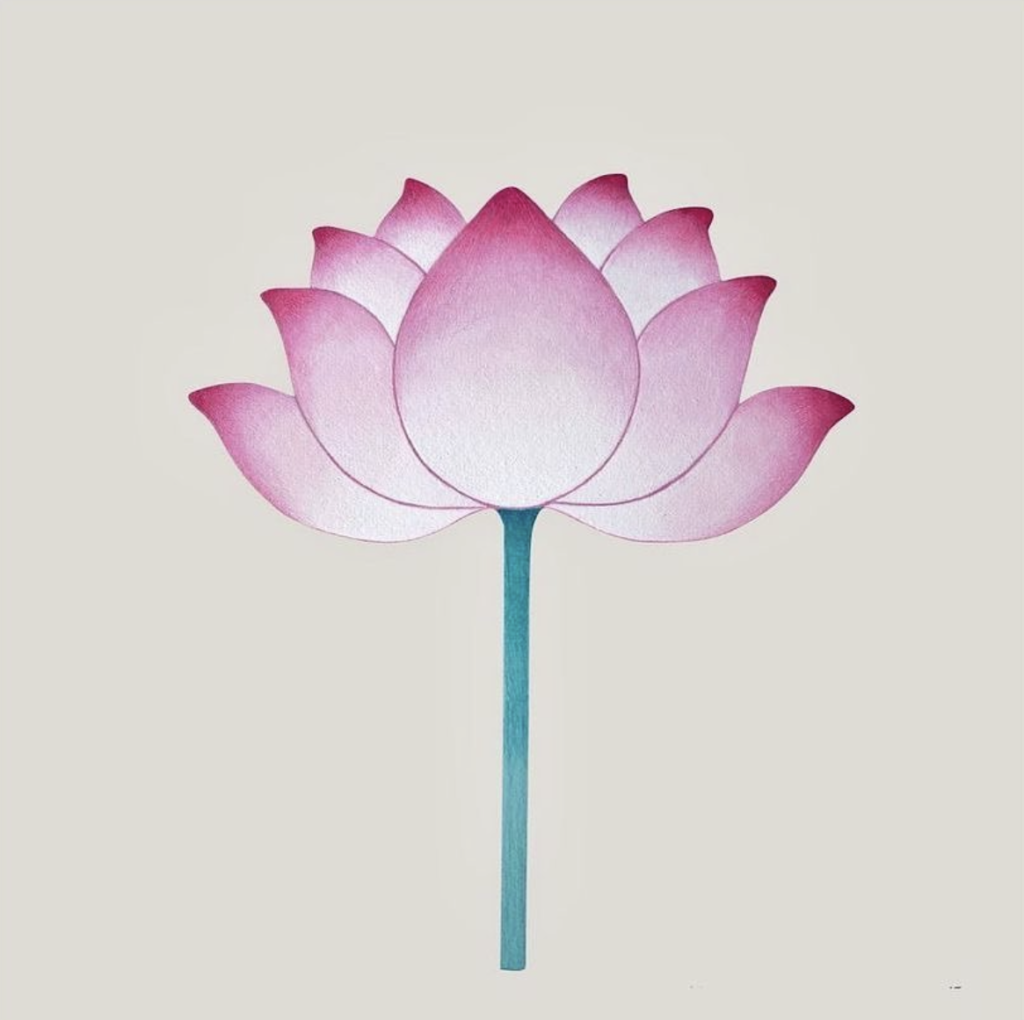
How did Samādhi Collective originate, and were there any obstacles encountered during its establishment? Did you ever experience the feeling of being outsiders in this endeavor?
J&K: At the beginning of lockdown in March 2020, we were staying in a small village in Uttarakhand, called Kasar Devi. We began to integrate our interests as something to do during lockdown, sharing some of our art and writing, along with our personal chanting and music practice on Instagram. (Jahnavi had been creating graphics inspired by her paintings, while Kamala was writing on Indian philosophy, having graduated with her MPhil in the Summer of the previous year.) As we received a positive response, we began to spend more and more time developing new ideas, creating and sharing more of our experience, and eventually sharing classes and courses in Sanskrit language, mantra recitation, and philosophy.
Neither of us feel that we have ever been treated as outsiders. Language is a very significant tool, as speaking Hindi with others or reciting mantras in Sanskrit means that people generally come to know that we have a decent understanding of the culture and customs in India, and we find that people are appreciative and accepting of the work we do and who we are.
How has your journey shaped your perception of the interplay between light and darkness within yourself? Could you recount a significant moment when you experienced a transition from darkness to light during your personal practice?
J&K: Having certain spiritual practice since childhood, including meditation, yoga asana and mantra chanting, means that whenever things happen in life that seem challenging or could be perceived as darkness, we have the tools to fall back on and enable us to not get caught up in the maya or delusion of material existence, meaning that we can stay in the light and let the darkness pass by without getting too affected by it. Sometimes it feels like darkness comes to challenge us, but really it is the catalyst to motivate us to deepen our experience.

How have prayers and mantras brought harmony into your life? Can you share with us how your practice has helped you find balance and harmony in a hectic world?
The sounds of Sanskrit create vibrations which have different positive effects, as the essence of the meaning of Sanskrit words is found in the sounds themselves. This also depends on our sankalpa, or what we would like to invoke through reciting a mantra. For example, if we wish to remove obstacles in our lives, we can recite mantras dedicated to Ganesha. If we want to cultivate knowledge and increase our capacity for learning, we may recite to Sarasvati. If we want to enliven prosperity, success, and abundance we can recite to Lakshmi.
Life can be hectic, and reciting specific mantras to suit certain situations can bring balance and harmony, to counteract or negate any challenges. Generally speaking, any consistent mantra recitation practice will cultivate evenness of awareness, creating subtle and refined feelings of well being and positivity.
Illustrate an ideal day in your lives. Could you walk us through your daily schedule, from the moment you wake up to when you retire for the night? Are there any personal rituals or practices that hold significance for you?
Ideally, we start our day with an early morning yoga practice, which really sets the tone for the rest of the day, bringing more energy and inspiration in all subsequent activities. We both meditate twice a day in the morning and evening. This, if anything, is the one non-negotiable for both of our daily routines. Many of our practices align quite well, so we try to meditate together, whenever possible. We also chant the Yogasutra of Patanjali together, a text which forms the foundation of yoga philosophy. In addition, we recite particular mantras of our own. We typically teach our classes in the afternoons, so we’ll recite mantras with our students as well, if we are teaching mantra recitation classes that day. We both love to practice our Hindustani Classical vocal music in the late afternoon or evening, sometimes picking a new raga to focus on each week, although it depends on our schedule. With the type of work that we do, we feel it becomes a part of our sadhana, so the day flows into segments of work and our own practices in a very natural way.

Samādhi means transcending, a state of consciousness, which is a lofty ideal in a chaotic world. How can one strive to be aware of one’s true nature?
This state is something that can be experienced and cultivated daily through spiritual practice – whether it be through meditation, asana, or mantra recitation. Because people are disconnected from themselves it seems unattainable. But starting to practice even a little bit can have a great impact, through consistency and continuity.
“It’s like dying a cloth — each time it is dipped in the dye and dried in the Sun, a little bit more of the colour will stay in the fabric. As this process is repeated, the colour becomes stronger and stronger, and this is the same for developing ones practices that ultimately enable awareness of one’s svabhava or true nature.”
Indian philosophy emphasizes a deep connection to nature and the cosmos. How does this connection influence your state of consciousness and your understanding of your role in the Earth’s well-being?
The Sanskrit language is known as the language of nature, it is said to have originated from the cognitions of the rishis from the sounds in nature itself. In this way, as you said, it is deeply woven into all aspects of Indian philosophy.
The scriptures remind us to cultivate harmony with nature, to respect and preserve it, for example in the Bhumi Sukta of Atharvaveda, the Earth is revered as the mother that provides everything for our existence and survival.
“On an experiential and philosophical level, as our consciousness and awareness grow, it becomes more and more obvious to us of the practical need to find more harmonious solutions to the way we live in our environment.”
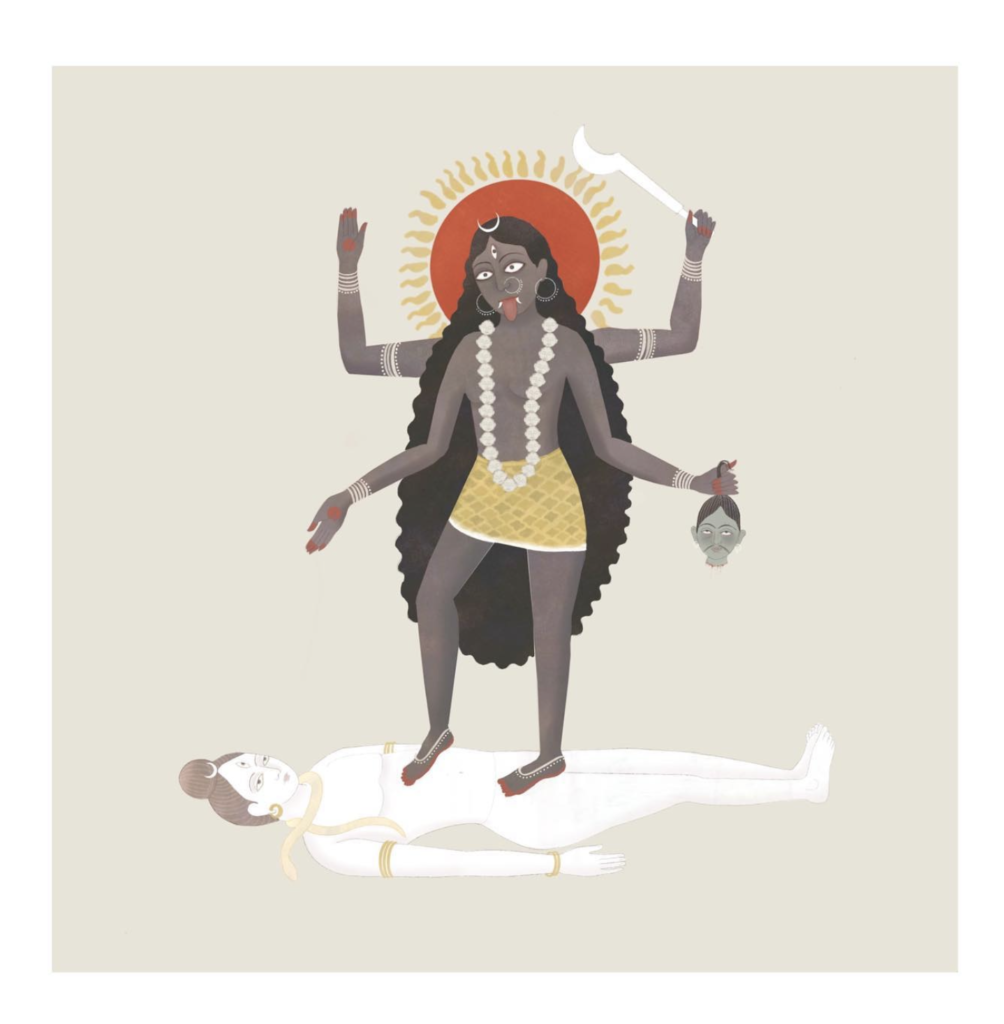
Mindful awareness is central to Indian philosophical systems. What practices can help us become more mindful in a world dominated by screens and so many distractions?
The scriptures were composed or cognised in a very different world from the one we inhabit today, with all these distractions. However, there are certain themes and ideas which are eternally applicable. We can understand the knowledge as it can be applied to our lives today.
This means that, although the world has increased in its diversifying values, with the proliferation of materialism, the fundamental reality of unity in diversity remains. Practices that bring us the experience of unity naturally begin to attract us more than actions that fragment our experience, as we become able to maintain and grow in unity whilst being challenged by the constant changes of daily life.
This is the purpose of yoga, and why it has become so relevant and popular in today’s world.
Ultimately, everyone wants to be happy, but is looking for happiness oftentimes in the wrong places. What is your perspective on the nature of happiness and the pathways to attain it?
In the Yogasutra, it is stated “Clarity of the mind is cultivated through friendliness towards those who are happy, compassion towards those who are suffering, joy towards those who are virtuous and impartiality to those who are not virtuous.”
(YS 1.33, मैत्रीकरुणामुदितोपेक्षाणां सुखदुःखपुण्यापुण्यविषयाणां भावनातश्चित्तप्रसादनम् ॥३३॥ maitrīkaruṇāmuditopekṣāṇāṃ sukhaduḥkhapuṇyāpuṇyaviṣayāṇāṃ bhāvanātaścittaprasādanam)
This quote is a great reminder about how we can find happiness in life in the way we engage with others, because often it is due to the actions or words of others that we find ourselves experiencing suffering or difficulties. If we remember this sutra, we can find a level of detachment from negativity, and in turn, we can focus on the good things, which definitely brings more clarity of mind and equanimity. Sometimes it is easier said than done, but when we read this question this particular sutra immediately sprung to mind! Purity of mind and body through yogic practices really enables us to transcend our mistakes and history, and as practice grows and deepens, happiness grows.
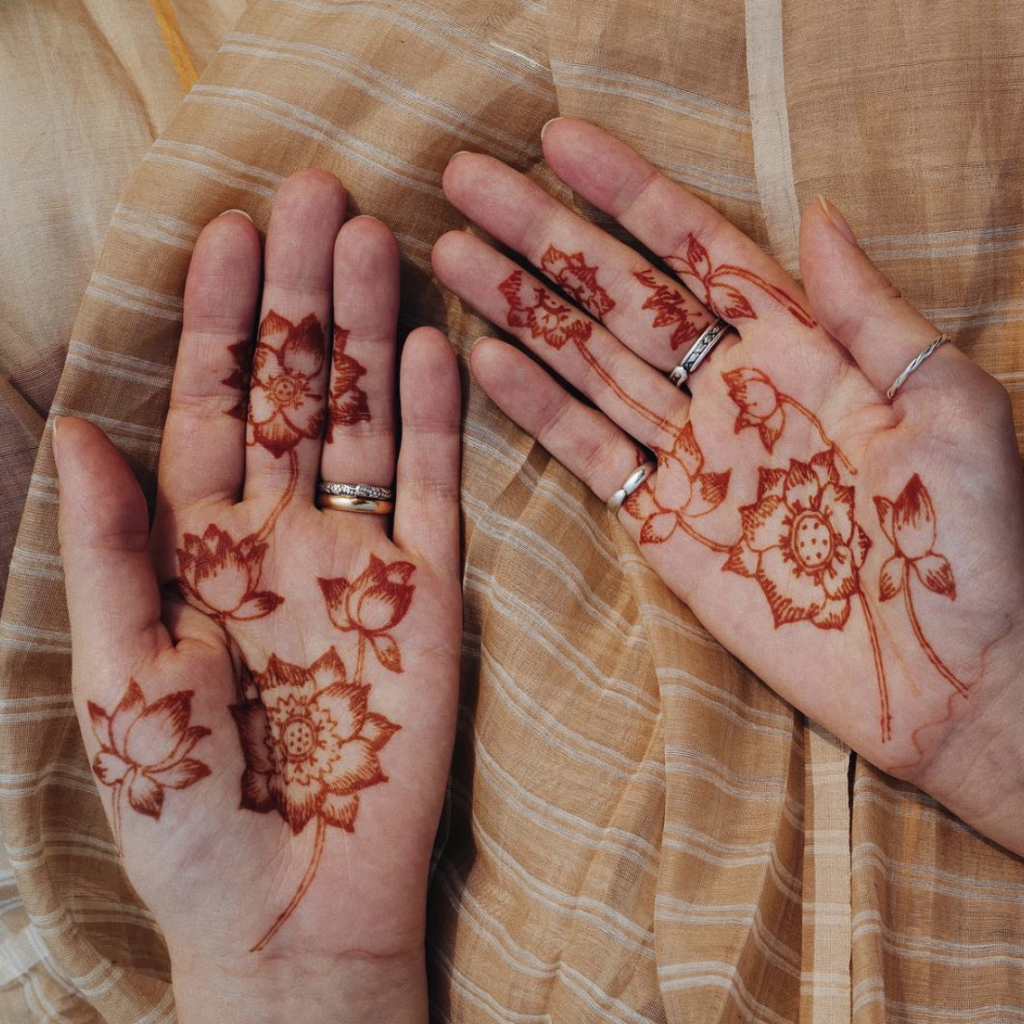
In a world that often feels polarized or challenging, what message of hope or inspiration would you like to share with readers who are seeking light and positive change?
The Pavamana Mantra offers simple, yet profound, words which can bring positivity and light in the face of challenges:
“From untruth lead me to truth, from darkness lead me to light, from mortality lead me to immortality.”
असतो मा सद्गमय ।
तमसो मा ज्योतिर्गमय ।
मृत्योर्मा अमृतं गमय ।
asato mā sadgamaya
tamaso mā jyotirgamaya
mṛtyormā amṛtaṃ gamaya
These three verses can be referred to as the three “pavamanas,” each focused on an aspect of transformation of the self — from unreality to reality, from darkness to light, from mortality to immortality. We can understand “from darkness to light” as being a metaphor for avidya to vidya, or from lack of knowledge to knowledge of the truth. In Indian philosophy, darkness is often equated with ignorance and light with knowledge. If we cultivate expansion of knowledge, then we will ultimately find light. Polarisation or opposites will always be there, just like day and night, but the cultivation of inner light will prevail in all circumstances.
(You can engage with the wisdom of Samādhi Collective via their website samadhicollective.com or email them at info@samadhicollective for information on their courses on Sanskrit, mantra recitation and philosophy. You can follow them on Instagram here)

Most Read Articles

A Complete Guide to Demi-Couture Jewellery in India
The ultimate guide to artistic baubles and demi-couture jewellery that evokes the splendor of India... Read More»

Rajasthan’s Aangi Finds New Life in Aangiwali’s Fusion of Tradition and Style
Aangi is a garment woven with history. In the arid landscape of Shekhawati, Rajasthan, it... Read More»

The Ultimate Guide to the Best Natural Deodorants in India
The top 12 natural deodorants that banish BO and nix nasties for round-the-clock freshness Our... Read More»

Easy Yoga Practices for Menopause Relief
Dr Hansaji Yogendra, Director of The Yoga Institute and President of the Indian Yoga Association... Read More»
